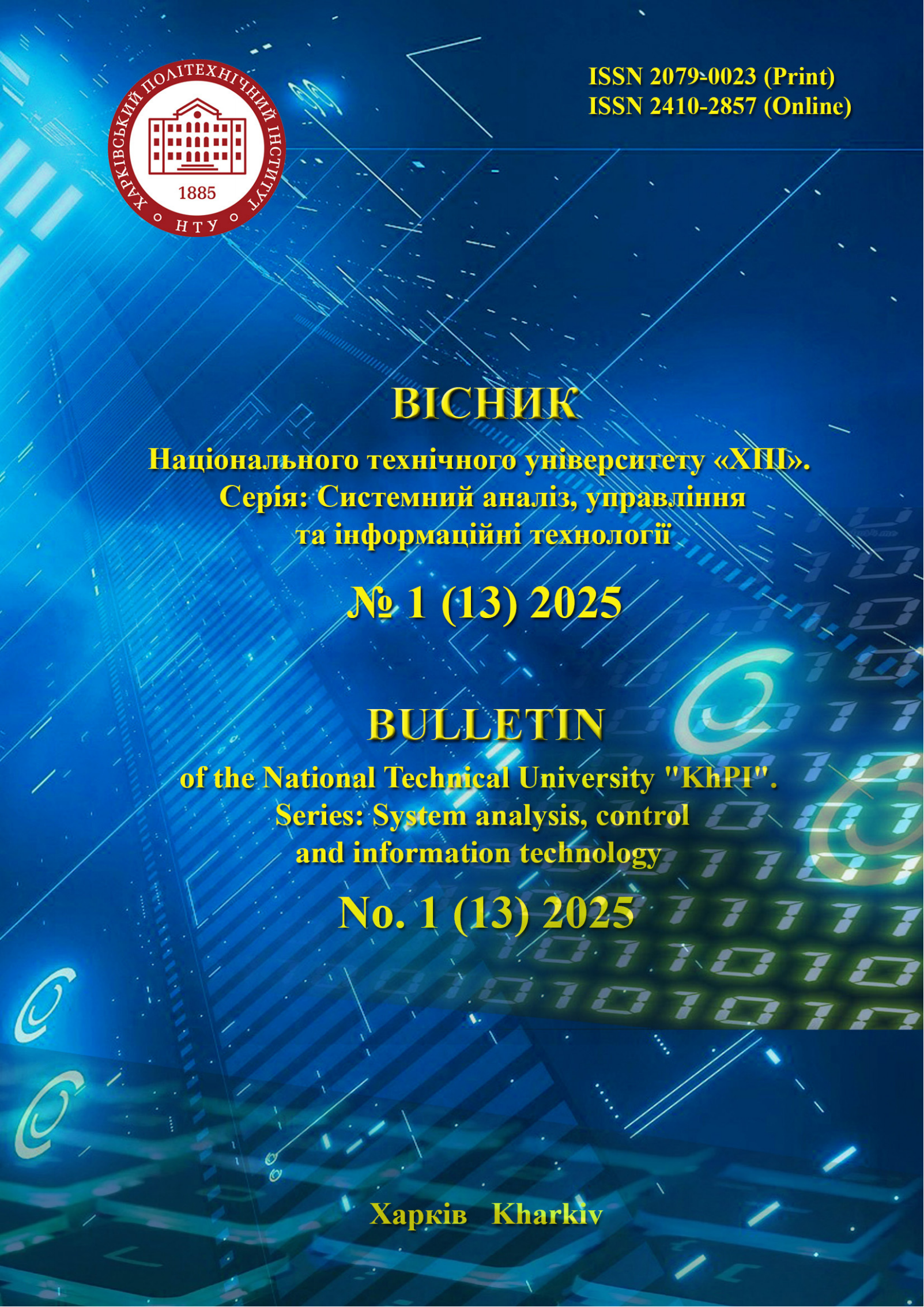INTELLIGENT TECHNOLOGY FOR OPTIMIZING THE PROJECT-BASED APPROACH TO TEACHING STUDENTS USING LEARNING MANAGEMENT SYSTEMS
DOI:
https://doi.org/10.20998/2079-0023.2025.01.19Keywords:
multiagent modeling, learning management system, artificial neural network, backpropagation algorithm, learning process, effective learning trajectoryAbstract
This work is devoted to developing of a recommendation system that enables the effective construction of learning trajectories for students studying in universities using learning management systems. The core of the recommendation system will be an artificial deep neural network of forward propagation, which takes as input information about the student and the subject that he or she should study and produces as output the most effective learning trajectory. The neural network is trained on data prepared using multi-agent modeling. The domain was decomposed into separate components and in the process of multi-agent modeling was represented in the form of agents and the environment in which they communicate with each other. The subject of this research is the modeling of the learning process in learning management systems. The purpose of the study is to optimize the student learning process within learning management systems. The subject area was analyzed and studied, the architecture of the recommendation system was developed, the architecture of the multi-agent system was developed, and a mathematical model of agent interaction was developed. To achieve the goals of the study, it is necessary to solve main tasks, namely: to prepare a training data set using multi-agent modeling and to develop and train a recommendation system that is based on an artificial deep neural network on this data. After completing all the tasks of the work, it is expected that the learning process of students in the learning management system will be optimized in terms of time and resources spent on learning, and the average level of knowledge will be increased.
References
Burke John J., Tumbleson Beth E. Learning Management Systems: Library Technology Reports. American Library Assoc., 2016. 42 p.
Forrester J. W. Principles of Systems. MIT Press, 1968. 391 p.
Kotsiantis S. Supervised Machine Learning: A Review of Classification Techniques. Informatica. 2007, vol. 31, iss. 3, pp. 249– 268.
Romero C., Ventura S. Educational Data Mining: A Review of the State of the Art. IEEE Transactions on Systems Man and Cybernetics Part C (Applications and Reviews). 2010, vol. 40, iss. 6, pp. 601–618.
Conati C., Gertner A. S., VanLehn K. (). Using Bayesian Networks to Manage Uncertainty in Student Modeling. User Modeling and User-Adapted Interaction. 2002, vol. 12(4), pp. 371–417.
Mizoguchi R., Bourdeau J. Using Ontological Engineering to Overcome Common AI-ED Problems. International Journal of Artificial Intelligence in Education. 2000, vol. 11, pp. 107–121.
Wooldridge M. An Introduction to MultiAgent Systems. John Wiley & Sons, 2009. 484 p.
Uhrmacher A. M., Weyns D. Multi-Agent Systems: Simulation and Applications (Computational Analysis, Synthesis, and Design of Dynamic Systems). CRC Press; 2009. 582 p.
Cervenka R., Trencansky I. The Agent Modeling Language – AML: A Comprehensive Approach to Modeling Multi-Agent Systems (Whitestein Series in Software Agent Technologies and Autonomic Computing). Birkhäuser, 2007. 366 p.
Taylor S. Agent-based Modeling and Simulation. Palgrave Macmillan, 2014. 327 p.
Gacovski Zoran. Artificial Neural Networks. Arcler Press LLC, 2017. 224 p.
da Silva I. N., Spatti D. H. Andrade R., Liboni L. H. B., dos Reis Alves S. F. Artificial Neural Networks: A Practical Course. Springer, 2016. 327 p.
Schalkoff R. J. Artificial Neural Networks. McGraw-Hill College, 1997. 448 p.
Markov Decision Processes. Course Notes. Carnegie Mellon University, 2019. ca. 20 p. Available at: https://www.cs.cmu.edu/~15281/coursenotes/mdps/index.html (accessed at 22.04.2025).
Thomas G. W. Markov Decision Processes. Stanford AI Lab Course Notes, ca. 2019. 11 p. Available at: https://ai.stanford.edu/~gwthomas/notes/mdps.pdf (accessed at 12.04.2025).
Dai P, Goldsmith J. Topological Value Iteration Algorithm for Markov Decision Processes. Available at: https://www.cs.uky.edu/~goldsmit/papers/tvi.pdf (accessed at 19.04.2025).
Downloads
Published
How to Cite
Issue
Section
License

This work is licensed under a Creative Commons Attribution 4.0 International License.
Authors who publish with this journal agree to the following terms:
- Authors retain copyright and grant the journal right of first publication with the work simultaneously licensed under a Creative Commons Attribution License that allows others to share the work with an acknowledgement of the work's authorship and initial publication in this journal.
- Authors are able to enter into separate, additional contractual arrangements for the non-exclusive distribution of the journal's published version of the work (e.g., post it to an institutional repository or publish it in a book), with an acknowledgement of its initial publication in this journal.
- Authors are permitted and encouraged to post their work online (e.g., in institutional repositories or on their website) prior to and during the submission process, as it can lead to productive exchanges, as well as earlier and greater citation of published work (See The Effect of Open Access).


